Table of Contents
But how???
Cause of death - 6+ months of infrequent exposure to 'fresh' water.
This particular model did have the additional waterproofing shaft seal, but the electrical connectors weren't sealed with much care.
When it started throwing tracking error faults randomly, it was time to replace it.
Looking inside a wet Clearpath
I've used a handful of different sized Teknic Clearpath servos from the MC, SD and SC ranges, and an opportunity to take a peek inside the integrated drive mounted to the back of the servo was too hard to resist.
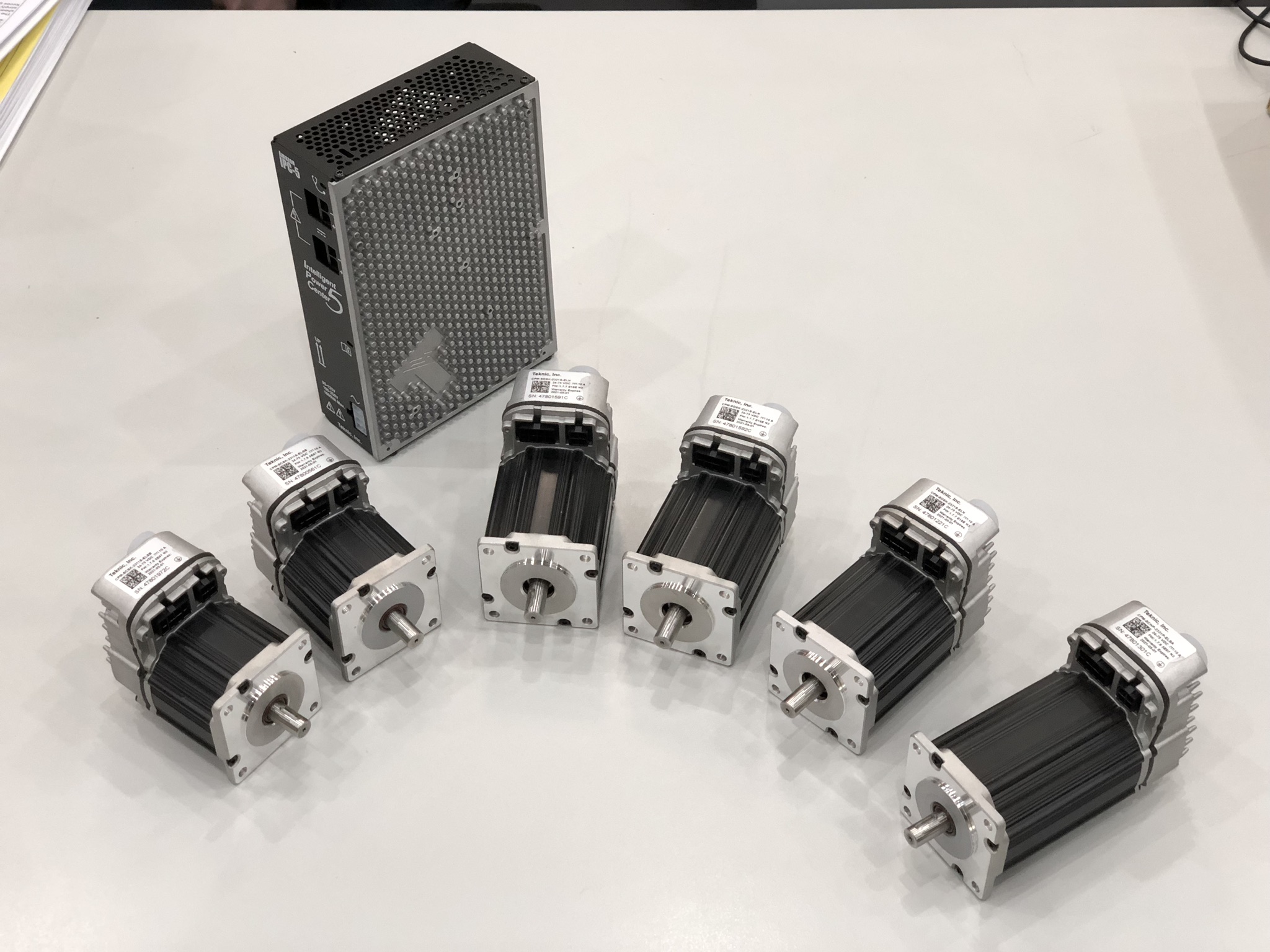
Undoing the screws lets us pull the integrated drive unit off the back of the motor and frame.
Mounted to the servo side of the assembly is a PCB which acts as a mounting interface for the optical encoder and interfaces to the motor's windings. The rest of the IO and drive electronics sit in the cast heatsink.
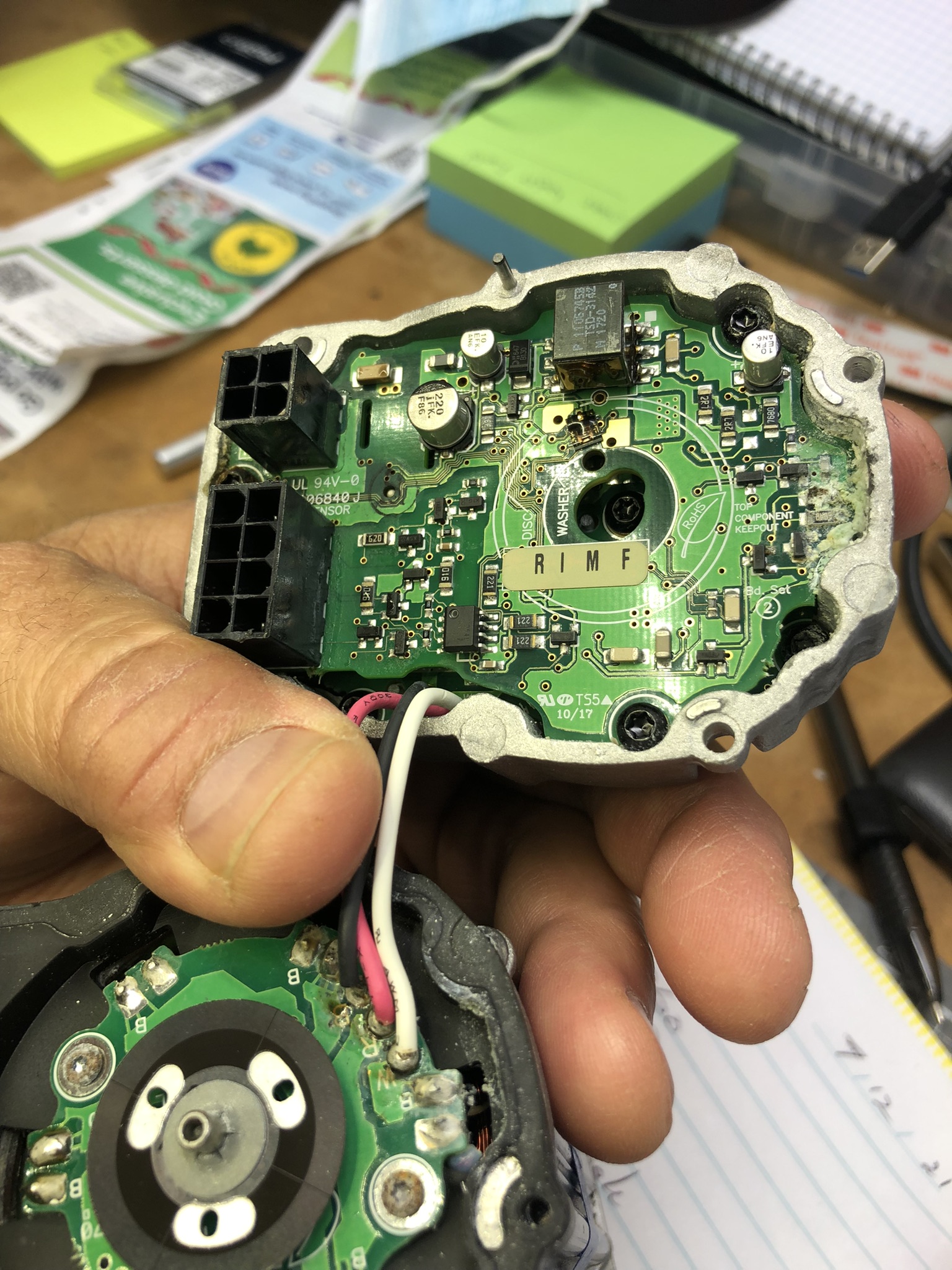
We can already see some corrosion products sitting near the 'bottom' of the heatsink.
Removing 6 more hex-screws separates the electronics stack.
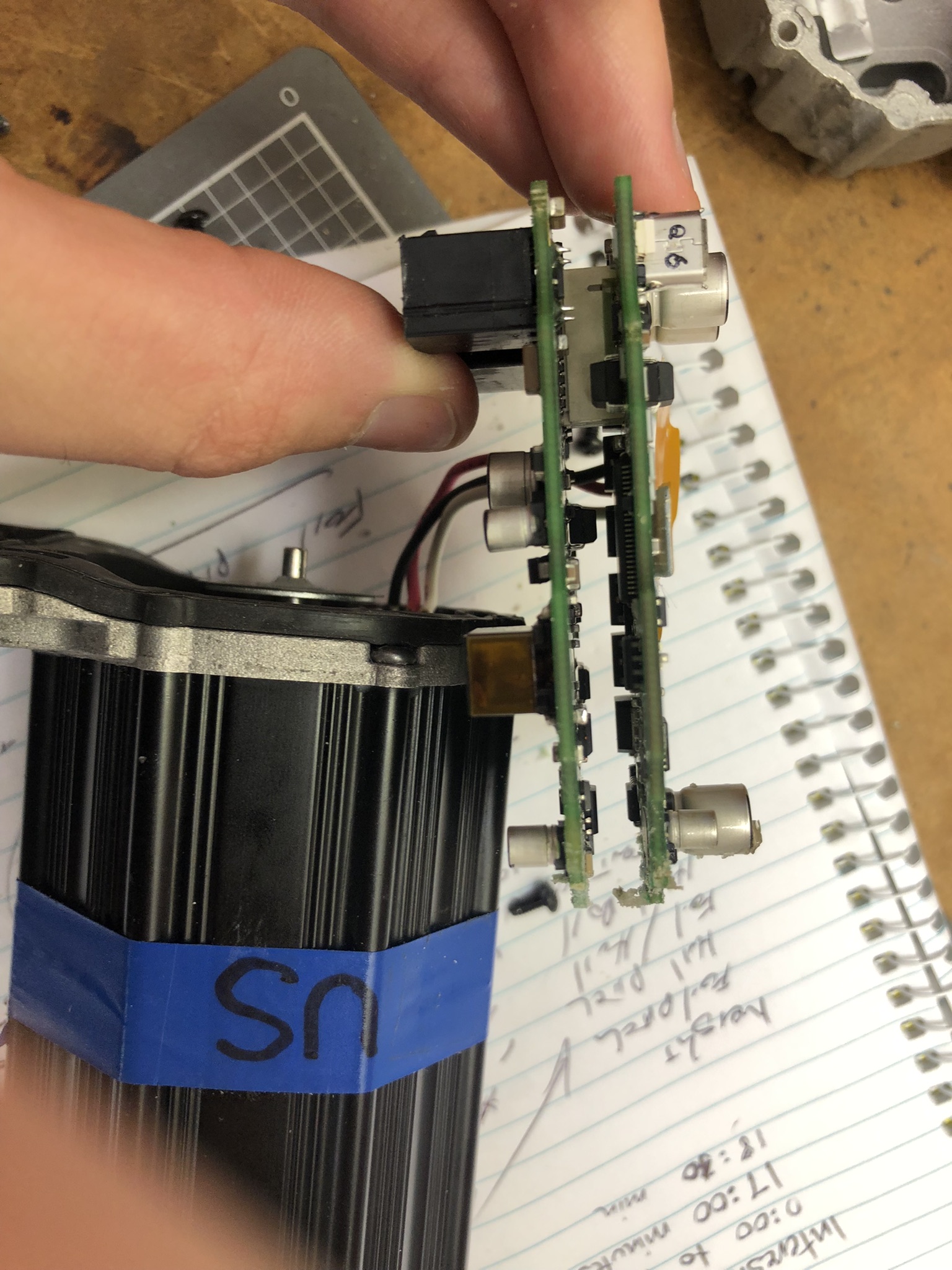
A better look at the extent of the corrosion products...

The 'front' board has the optical encoder, IO and some power conditioning. The back of said board has mostly IO conditioning optocouplers etc.

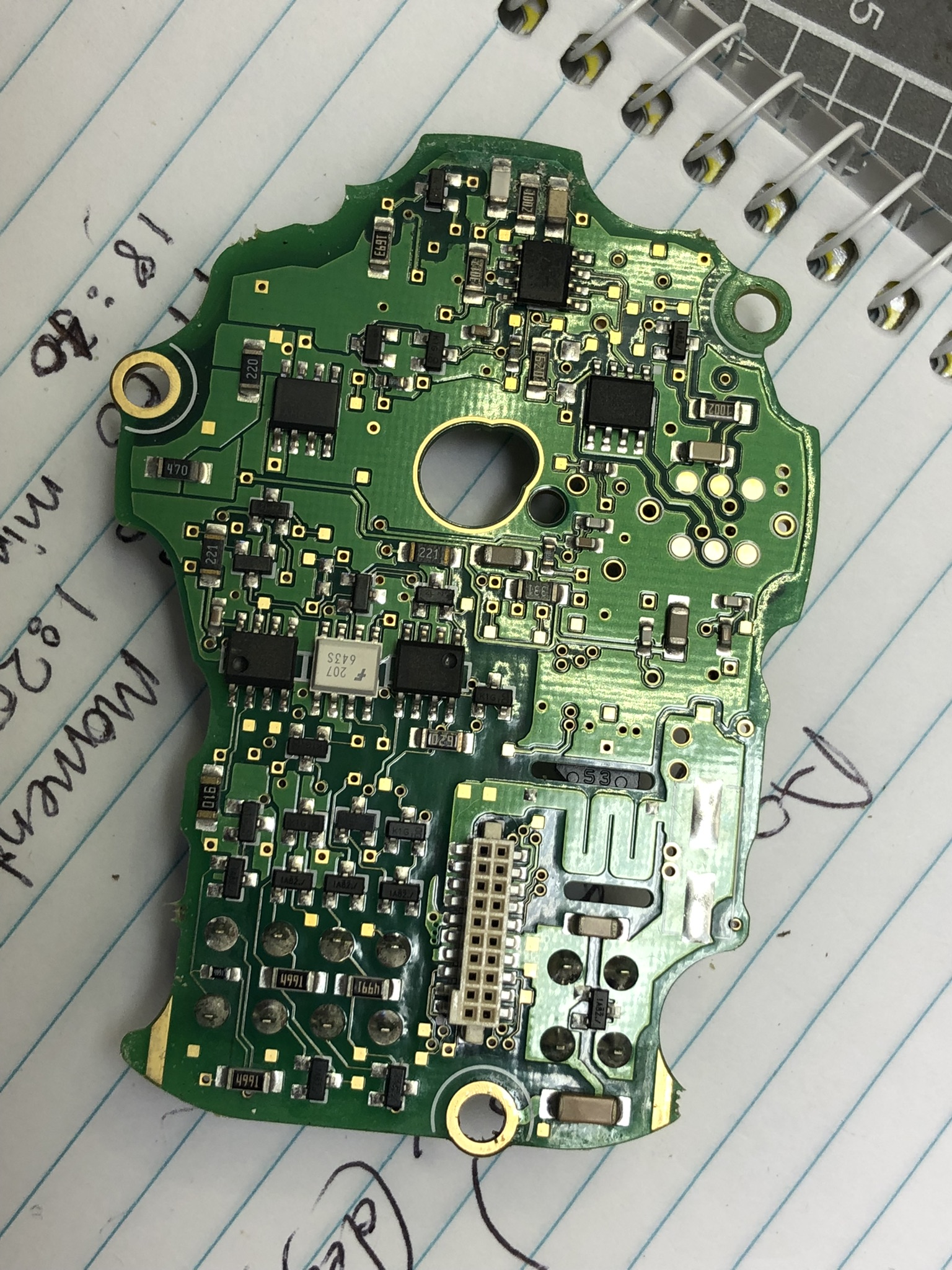
The control microcontroller, gate drivers/current shunts/FETs are on the rear-most PCB.
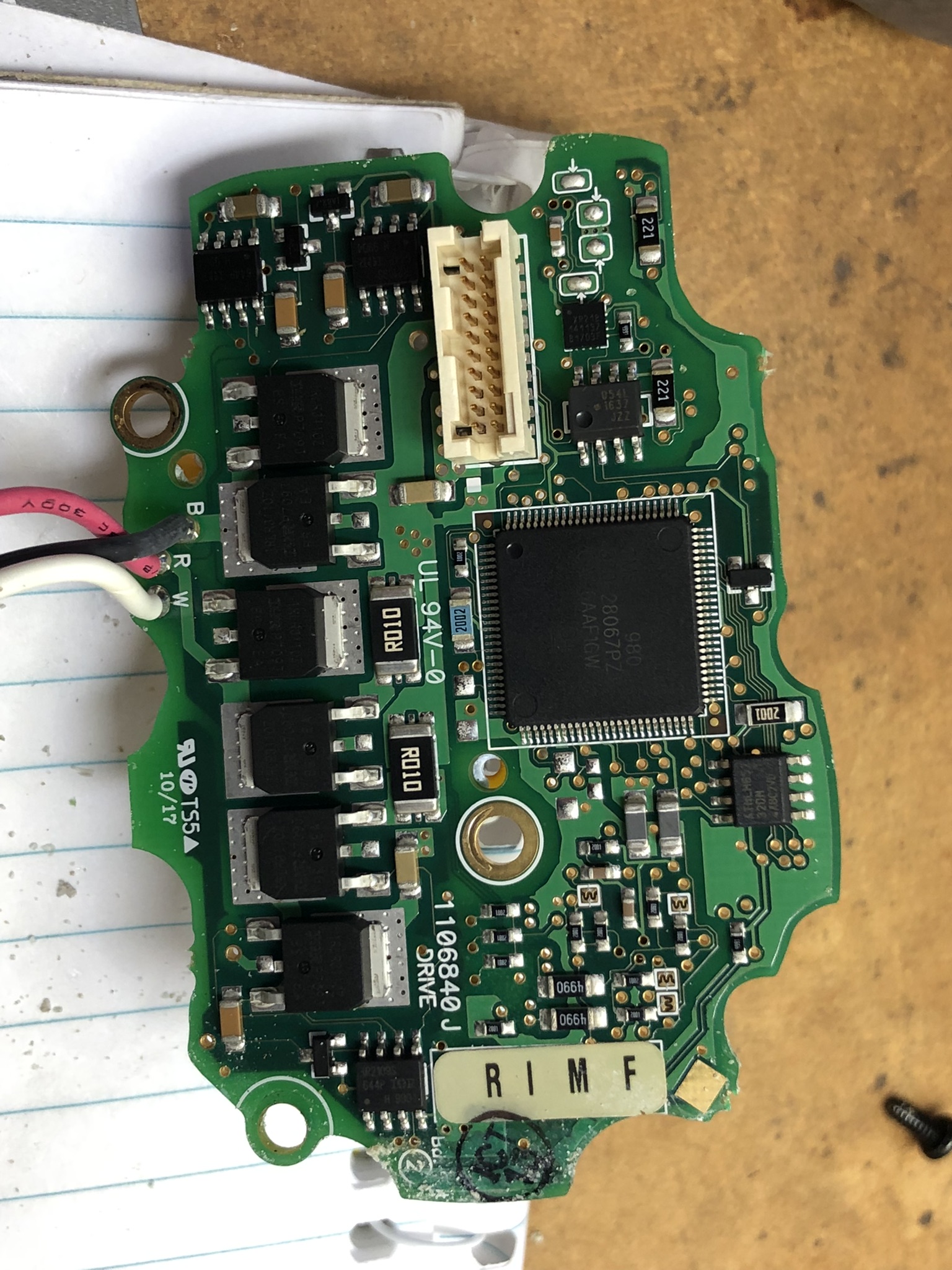
The rear-face of the control PCB has a cute thermal interface from the rest of the FETs, to a nicely machined step on the cast heatsink.
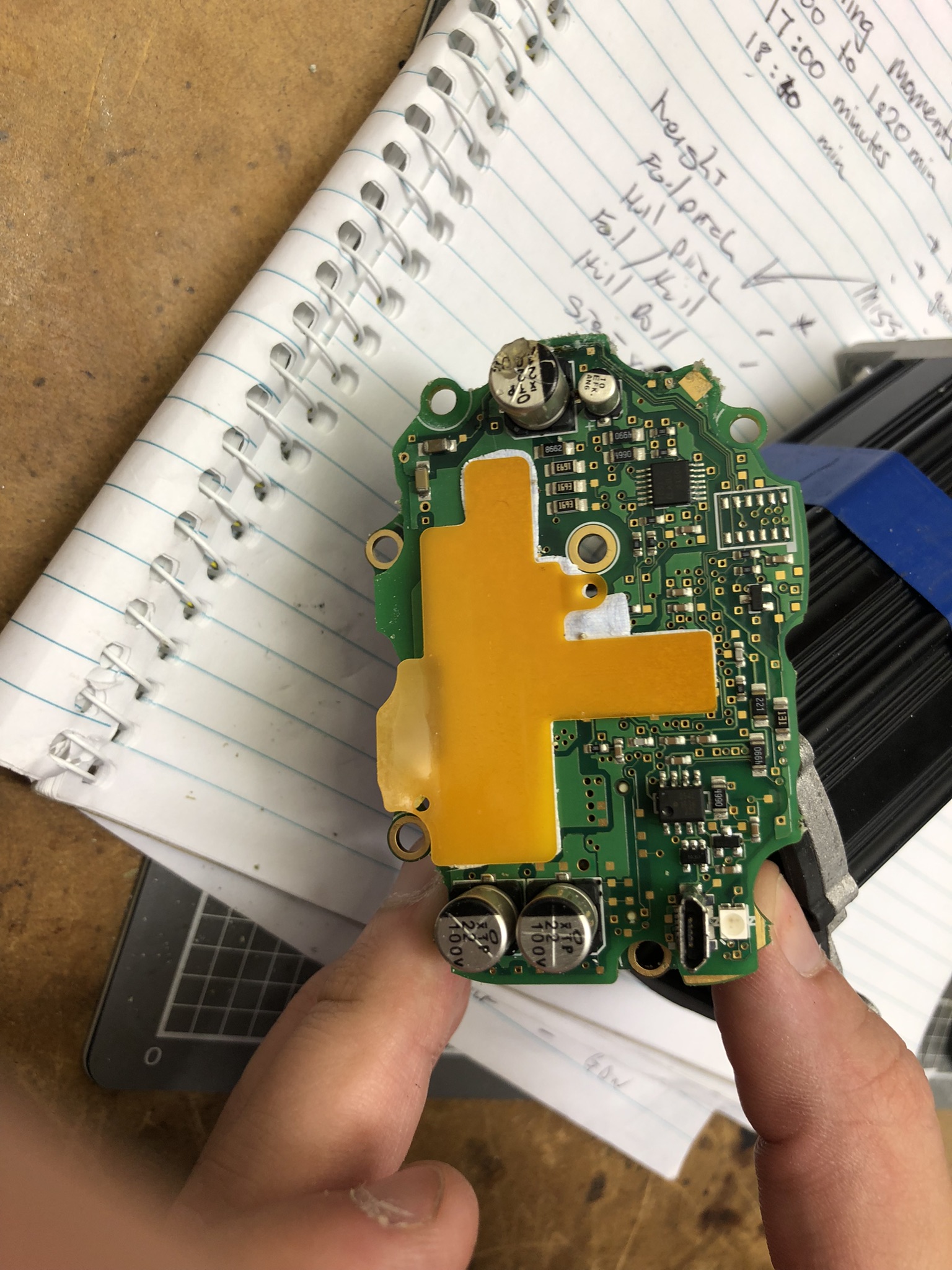
The USB config port is also mounted here, along with some bulk capacitors which have pockets in the heatsink.

Closing thoughts
Running this servo so far out of spec in a wet environment worked far better than it had any right to, and packing the IO connectors of the replacement servo with dielectric grease seems to have prevented any repeated damage.
For the price, I've found the form factor and reliability of the Clearpath servos to make them a good choice for precision positioning, provided the mechanical system has sufficient external gearing and low total backlash.
The internal electronics design and integration reflects the solid design and build quality. Just wish the config and tuning software ran on something other than Windows...